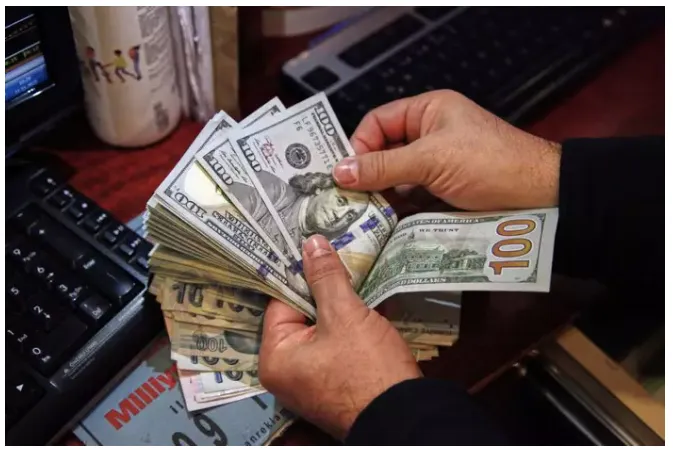简体中文
繁體中文
English
Pусский
日本語
ภาษาไทย
Tiếng Việt
Bahasa Indonesia
Español
हिन्दी
Filippiiniläinen
Français
Deutsch
Português
Türkçe
한국어
العربية
Market nerves prop up safe-haven dollar, yen
Abstract:The yen held most of its overnight gains on Friday, after falling U.S. yields and market jitters propped up the Japanese currency while another Wall Street selloff drove flight-so-safety bid to dollar, which remains near 20-year high peaks.

The yen was at 129.14 per dollar on Friday morning, softening on the day after it had reached a two-week peak of 127.5 overnight.
Thursdays 1.2% decline for dollar/yen was its biggest daily percentage fall this year. The euro/yen cross declined 2.5%, its biggest daily percentage fall since 2016 as the common currency a victim of the “risk off” mood.
“The yen is perhaps the most obvious signal of a shift from a world where yields were dominant and risk was resilient (yen negative), to a world this week where the dominant force is sour risk appetite driving yields lower (yen positive),” said Alan Ruskin, macro strategist at Deutsche Bank in a note.
The benchmark U.S. 10-year yield was 2.8822% having declined each session this week from Mondays high of 3.203%.
Rising U.S. yields at a time when the Bank of Japan was intervening to keep Japanese benchmark yields pinned down caused the yen to soften this year.
Investors are continuing to move towards safe-haven assets fearing central bank rate hikes to constrain inflation could hit global economic growth while MSCIs gauge of stocks around the world fell to its lowest level overnight since November 2020.
After the Fed raised its benchmark overnight interest rate by 50 basis points last week, the largest hike in 22 years, investors are assessing how aggressive the central bank policy path will be.
Expectations are completely priced in for another hike of at least 50 basis points at the central bank‘s June meeting, according to CME’s FedWatch Tool.
The euro was at $1.038 approaching its 2017 low of $1.034. A break past that would be its lowest in nearly 20 years.
The weak euro kept the dollar index at 104.75, just off its overnight 20-year peak of 104.92.
Sterling hunkered down at $1.2206, and the Aussie dollar was also bruised at $0.6887.
Crypto markets were steadier on Friday after a week of turmoil, as the risk-off mood combined with the spectacular collapse of stable coin TerraUSD.
The sell-off has taken the combined market value of all cryptocurrencies to $1.2 trillion, less than half of where it was last November, based on data from CoinMarketCap, and sent bitcoin to as low as $25,401.05 on Thursday, its lowest level since Dec. 28, 2020.
But things were calmer in early trading on Friday with bitcoin up 1.73% trading around $29,400.

Disclaimer:
The views in this article only represent the author's personal views, and do not constitute investment advice on this platform. This platform does not guarantee the accuracy, completeness and timeliness of the information in the article, and will not be liable for any loss caused by the use of or reliance on the information in the article.
Read more

IG Group Enters Direct Investment Market with £160 Million Freetrade Buyout
IG Group, a prominent global financial trading and investment company, has announced its acquisition of Freetrade, a commission-free investment platform, for £160 million. The deal, funded through IG’s existing capital resources, marks a strategic move to expand its footprint in the United Kingdom.

Cinkciarz.pl Under Fire: Frozen Accounts, Missing Funds
Cinkciarz.pl, one of Central Europe’s largest currency exchange platforms, has made headlines after accusing major Polish banks of conspiring to undermine its operations. The company has threatened legal action amounting to 6.76 billion zlotys ($1.6 billion) in damages. However, the platform is now under intense scrutiny following allegations of fraud and the mismanagement of customer funds.

BSP and JICA Renew Partnership to Expand Credit Risk Database for SMEs in the Philippines
On December 11, 2024, a significant milestone was reached in the Philippines' financial sector as the Bangko Sentral ng Pilipinas (BSP) and the Japan International Cooperation Agency (JICA) officially signed the ‘Records of Discussion’ for the second phase of the Credit Risk Database (CRD) project. The ceremony at the BSP headquarters in Manila marked a pivotal moment in widening access to financing for small and medium enterprises (SMEs) across the country.

Why Copy Trading is Perfect for New Investors
Learn why copy trading is ideal for new investors. Follow expert traders, minimize risks, and start earning confidently—no prior expertise is required.
WikiFX Broker
Latest News
How Long Can the Dollar Remain Strong?
Forex Price Trend Prediction! | Come be a New Year Price Winner!
HFM NY Special Offer!
How a Promised RM1.4 Million Return Turned into a Costly Scam
First Unfair Trading Case Reported Under South Korea’s Virtual Asset User Protection Act
Cinkciarz.pl Under Fire: Frozen Accounts, Missing Funds
“Predict and Win” Big Rewards! Join the Contest Now
South Korean President Yoon Suk Yeol's Arrest Shakes Markets
Titanium Capital LLC Ponzi Scheme: Henry Abdo Admits Fraud, Impacting Over 200 Investors
South Korea's Crypto Regulation Updates for 2025
Currency Calculator






